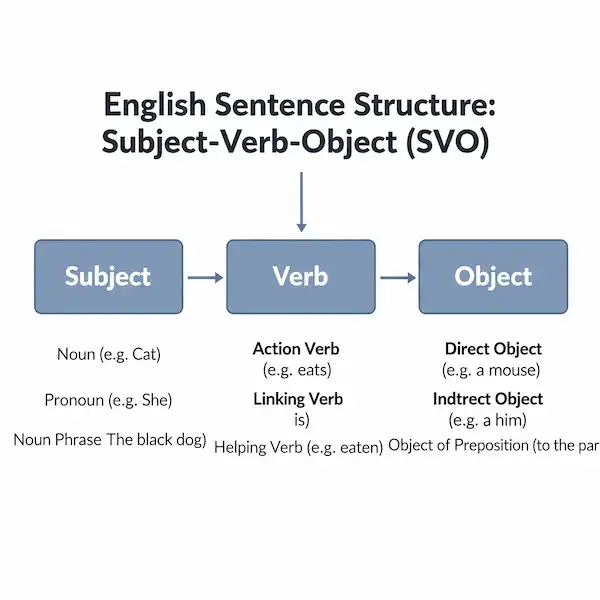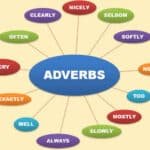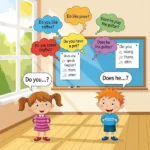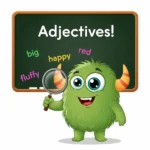Understanding English Sentence Structure: A Beginner’s Guide 📚
If you’re learning English, you’ve probably noticed that words don’t just get thrown together randomly. There’s a method to the madness! That method is called sentence structure, and it’s super important for clear communication. Think of it like building with LEGOs – you need to put the right pieces in the right places. English sentence structure can seem tricky at first, but with some clear explanations and examples, you’ll be building sentences like a pro. Let’s dive in!
Why is English Sentence Structure Important? 🤔
Imagine saying “ate I apple a.” Does that make sense? Not really! But “I ate an apple” is perfectly clear. Correct sentence structure helps your listener or reader understand exactly what you mean. It also makes your English sound more natural and fluent.
The Basics: Subject, Verb, Object (SVO)
The most common and fundamental sentence structure in English is Subject-Verb-Object (SVO). This is your go-to pattern!
- Subject (S): Who or what the sentence is about. This is usually a noun (person, place, thing, idea) or a pronoun (he, she, it, they, I, you, we).
- Verb (V): The action or state of being. What the subject does or is.
- Object (O): Who or what receives the action of the verb. Not all sentences have an object.
Let’s look at some examples:
| Subject | Verb | Object |
| She | reads | a book. |
| The dog | chased | the ball. |
| We | like | pizza. |
| He | drinks | coffee. |
| Birds | sing | (no object) |
In the last example, “Birds sing,” there’s no object because “sing” is an intransitive verb – it doesn’t need to act on something. Many sentences are perfectly complete with just a subject and a verb!
Adding More Information: Adjectives, Adverbs, and Prepositional Phrases
Once you’ve got SVO down, you can start adding more details to make your sentences richer and more interesting.
Adjectives
Adjectives describe nouns or pronouns. They tell you what kind or how many. They usually come before the noun they describe.
- Original: She reads a book.
- With adjective: She reads a fascinating book.
- Original: The dog chased the ball.
- With adjective: The energetic dog chased the red ball.
Adverbs
Adverbs describe verbs, adjectives, or other adverbs. They tell you how, when, where, or to what extent.
- How: The dog barked loudly. (describes how it barked)
- When: I will leave tomorrow. (describes when I will leave)
- Where: They played outside. (describes where they played)
- To what extent: She sang very well. (describes how well she sang)
Adverbs are flexible and can often be placed in different parts of a sentence, but a common place is after the verb or at the beginning/end of the sentence.
| Subject | Verb | Object | Adverb (How) |
| She | sings | beautifully. | |
| He | drives | carefully. |
Prepositional Phrases
A prepositional phrase starts with a preposition (like in, on, at, with, for, to) and ends with a noun or pronoun (the object of the preposition). These phrases add details about time, place, manner, and more.
- Place: The cat is on the mat.
- Time: We will meet at noon.
- Manner: He spoke with confidence.
Let’s put it all together:
The energetic dog chased the red ball in the park very quickly.
- Subject: The energetic dog
- Verb: chased
- Object: the red ball
- Prepositional Phrase (Where): in the park
- Adverb (How): very quickly
Asking Questions: Inverting the Structure
Now that you’re comfortable with basic statements, let’s learn how to turn them into questions. This usually involves changing the word order or adding a “helping” verb.
Yes/No Questions
For questions that can be answered with a simple “yes” or “no,” you often move a helping verb (like is, are, do, have) to the beginning of the sentence.
- Statement: You are a student.
- Question: Are you a student?
If a statement doesn’t have a helping verb, you add a form of “do” (do, does, did).
- Statement: They like pizza.
- Question: Do they like pizza?
- Statement: He eats breakfast.
- Question: Does he eat breakfast? (Note the verb “eat” changes back to its base form!)
Wh- Questions (Who, What, Where, When, Why, How)
These questions ask for specific information. The question word comes first, followed by a helping verb or the main verb.
- Statement: He is studying English.
- Question: What is he studying?
- Statement: They went to the park.
- Question: Where did they go?
- Statement: She woke up at 7 a.m.
- Question: When did she wake up?
More Complex Structures: Compound and Complex Sentences
As you get more comfortable, you’ll want to build more sophisticated sentences.
Compound Sentences
A compound sentence connects two or more independent clauses (complete thoughts that could stand alone as a sentence) with a coordinating conjunction (FANBOYS: For, And, Nor, But, Or, Yet, So).
- I like coffee, and she prefers tea.
- He studied hard, but he still found the test difficult.
- She can sing, or she can dance.
Complex Sentences
A complex sentence combines an independent clause with one or more dependent clauses. A dependent clause cannot stand alone as a sentence and is introduced by a subordinating conjunction (like because, although, while, if, when, since).
- Because it was raining, we stayed inside. (Dependent clause first)
- We stayed inside because it was raining. (Independent clause first)
- Although she was tired, she finished her homework.
Practice Makes Perfect! ✍️
The best way to master English sentence structure is to practice regularly.
- Read: Pay attention to how native speakers construct their sentences when you read books, articles, or even social media posts.
- Write: Try to write a few sentences every day. Start simple and gradually add more details.
- Listen & Speak: When you hear English, try to identify the subjects, verbs, and objects. When you speak, try to form complete sentences.
- Analyze: Break down sentences you encounter. Can you identify the subject? The verb? Are there any adjectives or adverbs?
Here is a PDF worksheet you can download with practice sentences. The answers are on a separate page.
Additional Helpful Content for Your English Journey 🗺️
- Tenses: Verbs change their form depending on when an action happens (present, past, future). This is crucial for clear communication.
- Articles (a, an, the): These small words can be tricky, but they are very important for indicating whether a noun is specific or general.
- Punctuation: Commas, periods, and other marks help organize your sentences and make them easier to read.
- Vocabulary Building: The more words you know, the more effectively you can use sentence structure to express yourself.
Additional Links
- Here are some conversational phrases – Learn Common Conversational English Phrases
- Learn more about vocabulary for describing your daily routine. – Daily Routine: English Vocabulary for Beginners
Authoritative External Links 🌐
Here are some excellent, reliable resources where you can learn more about English grammar and sentence structure:
- Purdue OWL (Online Writing Lab): A comprehensive resource for all things grammar and writing. https://owl.purdue.edu/owl/general_writing/grammar/sentence_structure/index.html
- British Council LearnEnglish: Offers free resources for learners worldwide. https://learnenglish.britishcouncil.org/grammar
- Cambridge Dictionary: Not just for definitions, but also great for grammar explanations. https://dictionary.cambridge.org/grammar/
Keep practicing, and you’ll be amazed at how quickly your English sentence structure improves! You’ve got this! ✨




